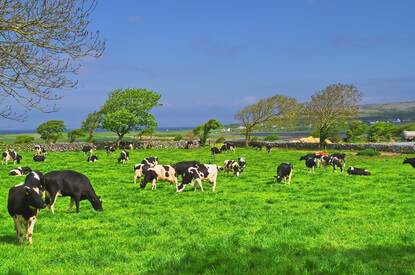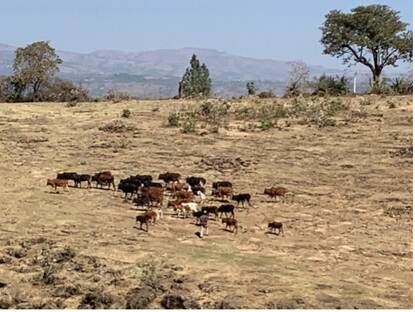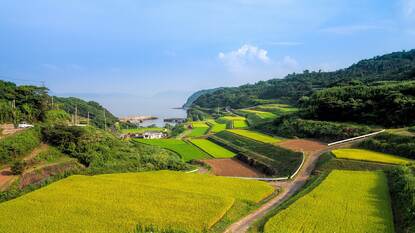Agroforestry has made a big contribution to the lives of many Indonesian farmers, especially small-scale ones. With help of programs such as Working Landscape and TRACTIONS, which is financed by the Netherlands Ministry of Foreign Affairs, and TRACTIONS, which is funded by RVO, they have succeeded not only in increasing their income, enhancing farmer organizational skills, but also in making a significant contribution to carbon sequestration and biodiversity conservation.
There is a growing awareness that we urgently need to change the food system. Agroforestry, the practice of combining trees and crop, plays an important role in this transformation. This nature-based approach to production and land use provides an alternative to the modern agricultural paradigms which generally involve single-species, treeless monocultures, including single-species plantations.
Interest in agroforestry practices has increased substantially in recent decades. This is reflected in growing concerns about deforestation and environmental degradation, shown through statements such as EU Deforestation-Free Regulation, Palm Oil Sustainability compliance certifications, payment for environmental services schemes, and carbon offset schemes. Also, agroforestry can strongly contribute to improving the productivity, sustainability, and resilience of agricultural production. It is considered as one of the best solutions for carbon sequestration and it will open international carbon markets for smallholders and other stakeholders. Carbon credits earned from agroforestry have the potential to provide them with an additional income, increasing their resilience and making the model more attractive.
‘Farmers have participated in farmer field schools which encourage them to analyse their own land use and identify and test ways to improve productivity’
Increased agricultural production and farm income
In Indonesia, agroforestry has had a positive economic, social and environmental impact. Multiple cropping systems can improve livelihoods through income diversification. This is especially important for smallholder farmers and helps to improve access to subsistence needs (daily needs, for self-consumption of food, medicine, and spices). The following practices in Indonesia illustrate how agroforestry can contribute to increasing a farmers' income potential.
1. Rubber agroforestry
In recent years, rubber agroforestry has become less attractive due to the low productivity of existing rubber agroforestry, as well as low and unstable rubber prices. This is particularly the case in Simpang Dua district, West Kalimantan province, where non-profit forestry organization Tropenbos Indonesia is active. This landscape is one of the focus landscapes of the Indonesian Working Landscape program (2019 - 2023) financed by the Netherlands Ministry of Foreign Affairs and implemented by the Tropenbos International (TBI) network. The remaining rubber agroforests in Simpang Dua district play an important role, as they provide farmers with products for both cash and subsistence, while increasing carbon sequestration and biodiversity conservation. As part of the Working Landscape program, Tropenbos Indonesia has been working with communities and other stakeholders to revitalize rubber agroforestry.
In this context, farmers have participated in farmer field schools which encourage them to analyse their own land use and – together with technicians – identify and test ways to improve productivity, such as the use of organic inputs that can be produced independently while cutting production cost, improved tapping techniques, rubber post harvesting treatment, and other smart practices.
Farmers have also been facilitated to organize themselves, so they can increase their bargaining power, and make direct sales to rubber factories without middlemen. This is expected to help them maintain existing agroforests and revitalize old and less productive rubber forests.

2. Cocoa agroforestry
Kalimajari is a local Bali-based NGO, which has implemented TRACTIONS, the Transforming the Cocoa Sector in Indonesia Through Value Addition for Smallholders (program funded by RVO through the Sustainable Development Goals Partnership (SDGP) Facility project) together with Rainforest Alliance and Rikolto. They practice agroforestry by combining cocoa plants with coconut and banana. Also, Kalimajari blends crops with livestock (goats).
Ecologically, crop diversity makes land more fertile. In addition, it does not require many inputs and helps to maintain microclimates. Economically, crop diversification is a means to provide farmers with a more diverse source of income. They can earn a weekly, monthly, and yearly income, and they can also add value to their cocoa by fermenting it, which fetches a higher price than regular cocoa.


3. Combining pineapple crops with palm oil
In Mengkapan village, Riau province, palm oil farmers earn additional income from growing pineapples. In addition, women's groups there produce and sell pineapple-derived products such as juices, pastries, and chips. Although their efforts may be more about intercropping than agroforestry, the principles are the same: integrating multiple cultures to achieve economic and environmental sustainability.
There are more examples. In Central Kalimantan, the Dayak community mix palm oil plants with various types of timber plants, such as rubber, albizia, jelutong, bitter bean, and even fruit-producing plants. In Langkat (North Sumatra), the community develops mixed palm oil crops in a random cropping pattern over smaller lands (less than one hectare) nearby their houses. In several locations along Lubuk Kertang (Stabat, Langkat), they mix palm oil with cocoa, durian, banana, and even vegetable crops. In Tebo (Jambi), the community has been growing palm oil plants that they mix with forest plants (meranti, Shorea sp) for over the last 15 years.

‘Agroforestry empowers Indonesian farmers: a path to sustainable livelihoods and environmental conservation’
Government involvement through regulatory measures
In the palm oil sector, especially in forest zones, the Minister of Environment and Forestry Regulation No. P.9/2021 regarding social forestry requires individual owners and companies to implement the Jangka Benah strategy. Jangka Benah refers to the period required to repair reforest state-forest status lands that are damaged by the expansion of palm oil plantations established by violating state-forest boundaries. State-forest areas must be returned to normal or near normal conditions, in the form of mixed plantations or agroforestry models. As palm oil agroforestry is commonly practiced, the Jangka Benah Strategy is not considered a theoretical but an empirical scheme.
And there are more regulations, such as the Government Regulation (PP) No. 26/2020 on Forest rehabilitation and reclamation. Together, these regulations show that the Indonesian government is concerned with agroforestry as well. To be effective, however, these regulations must be implemented by task forces and verification teams, and that’s when certain problems may arise. Nonetheless, they are an important step forward in the transformation of the Indonesian food system.
The Netherlands’ contribution
The Netherlands supports the efforts of the Indonesian government by funding other programs related to enabling the environment, business case planning, capacity building, and responsible finance for environmentally sound businesses such as the Mobilizing More for Climate (MoMo4C). Also, it helps to increase added value for smallholders such as Transforming the Cocoa Sector in Indonesia program.
In addition, the agricultural team at the Netherlands embassy in Jakarta is conducting an agroforestry study that identifies key issues, challenges and opportunities as well as best practices and includes impacts on food security, livelihoods, climate resilience and biodiversity. The results of this study will be shared with actors in the Netherlands and Indonesia as a reference for joint implementation.
Contact
Would you like to know more about the current developments in the domain of agriculture and nature in Indonesia or contact the agricultural team at the Netherlands Embassy in Jakarta?
You can visit the country page of Indonesia at the website agroberichtenbuitenland.nl of the Netherlands ministry of Agriculture, Nature and Food Quality. You can also send an email to JAK-lnv@minbuza.nl







































